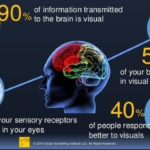In a world where hearing health Pedaccustic often goes overlooked, the field of pedacustic has emerged as a powerful and innovative approach to sound-based therapy. With its focus on enhancing auditory perception and addressing various hearing disorders, pedacustic has captured the attention of medical professionals and patients alike. Whether you are curious about improving your auditory abilities or simply exploring alternative therapies for sound-based healing, pedacustic offers exciting possibilities.
But what exactly is pedacustic? And how does it work? This article delves deep into the science, benefits, and applications of pedacustic therapy, exploring how it can transform lives by improving hearing and auditory function. From understanding the intricate relationship between sound and the brain to learning about the potential benefits of sound therapy for mental and physical well-being, this comprehensive guide offers everything you need to know about pedacustic.
Pedacustic: An Introduction to Sound Therapy
Pedacustic therapy revolves around the use of sound to improve auditory health and perception. The term comes from the combination of “peda,” meaning relating to children or learning, and “acustic,” referring to sound. Initially developed for addressing developmental hearing issues, it has since expanded into a broader field that supports auditory functions in people of all ages.
At its core, pedacustic therapy utilizes specific sound frequencies to stimulate the brain and ears. By interacting with the auditory pathways, this therapeutic method can help rewire neural connections, sharpen auditory perception, and even reduce the symptoms of certain hearing conditions such as tinnitus.
The Science Behind Pedacustic Therapy
Pedacustic therapy is based on well-established principles of auditory neuroscience and sound healing. One of the key concepts behind the practice is neuroplasticity, which refers to the brain’s ability to reorganize itself in response to stimuli, including sound. When sound frequencies enter the ear, they stimulate the auditory nerves, sending signals to the brain for processing. In individuals with hearing impairments, these signals might be weak or distorted, leading to difficulties in sound perception.
By exposing individuals to therapeutic sound patterns, pedacustic therapy encourages the brain to “retrain” its processing of auditory information. Over time, this can lead to improvements in hearing clarity, sound differentiation, and overall auditory health. The therapy also uses a variety of acoustic stimuli, ranging from high-pitched tones to low-frequency waves, each designed to target specific parts of the auditory system.
Additionally, pedacustic therapy often incorporates bone conduction, a technique where sound is transmitted through the bones of the skull directly to the inner ear, bypassing the outer and middle ear. This is especially helpful for individuals with conductive hearing loss or other auditory processing disorders.
Benefits of Pedacustic Therapy for Hearing Health
One of the most compelling aspects of pedacustic therapy is its wide range of benefits. Whether used as a standalone treatment or in conjunction with traditional hearing aids and devices, pedacustic offers significant improvements in auditory perception and overall well-being.
- Enhanced Auditory Perception: Pedacustic therapy sharpens the ability to differentiate between sounds, improving clarity and comprehension in noisy environments. This is particularly beneficial for individuals who struggle with speech discrimination in crowded or loud settings.
- Tinnitus Relief: For those suffering from tinnitus, the persistent ringing in the ears can be debilitating. Pedacustic therapy offers a non-invasive approach to reducing tinnitus symptoms by retraining the brain to minimize the perception of phantom sounds.
- Cognitive Benefits: Since hearing and cognitive function are closely linked, improving auditory health through pedacustic therapy can lead to sharper focus, better memory retention, and enhanced learning abilities.
- Emotional and Mental Well-being: Sound has a profound impact on our emotions and mental health. Pedacustic therapy can help alleviate stress, anxiety, and depression by harmonizing the body’s response to sound stimuli.
- Support for Age-Related Hearing Loss: Pedacustic therapy can be used as a preventive measure to slow the progression of age-related hearing loss by keeping the auditory system engaged and active.
Applications of Pedacustic in Modern Medicine
As the science of pedacustic continues to evolve, its applications in modern medicine are expanding. From pediatric audiology to elderly care, this form of sound therapy is gaining traction across various fields of healthcare.
- Pediatric Audiology: One of the original uses of pedacustic was to help children with developmental hearing issues. By incorporating this therapy into early intervention programs, children with hearing impairments can experience faster auditory development, improving their ability to communicate and learn.
- Rehabilitation for Hearing Loss: For patients undergoing rehabilitation after hearing loss, pedacustic can be an essential component of a comprehensive treatment plan. It helps retrain the brain to recognize and interpret sounds, even after long periods of hearing deprivation.
- Mental Health Treatment: Pedacustic therapy is now being explored as a tool for improving mental health. By harnessing the calming and restorative power of sound, therapists can help patients manage conditions like anxiety, depression, and even post-traumatic stress disorder (PTSD).
- Tinnitus Management: Managing tinnitus can be challenging, but pedacustic therapy has shown promising results in helping individuals reduce the severity of their symptoms. By disrupting the brain’s cycle of sound perception, this therapy can provide long-term relief for those plagued by ringing ears.
How Pedacustic Therapy Works: A Step-by-Step Guide
Pedacustic therapy sessions typically follow a structured format, although the specific techniques and duration may vary depending on the individual’s needs. Here is a general overview of what to expect during a typical session:
- Initial Assessment: Before beginning therapy, patients undergo a thorough hearing assessment to determine the extent of their auditory issues. This may involve audiometry tests, speech recognition assessments, and a review of medical history.
- This includes selecting specific frequencies and sound patterns tailored to the patient’s auditory needs.
- Therapy Sessions: During each session, patients are exposed to sound stimuli through headphones or bone conduction devices. These sessions typically last 30 to 60 minutes, with patients relaxing in a comfortable setting while the therapy takes place.
- Ongoing Maintenance: Many patients continue with periodic pedacustic therapy sessions to maintain their auditory health, especially if they are dealing with chronic conditions like tinnitus or age-related hearing loss.
The Future of Pedacustic: What Lies Ahead
As research into pedacustic therapy progresses, the future looks bright for this innovative approach to hearing health.
FAQs
Who can benefit from pedacustic therapy?
Pedacustic therapy is beneficial for individuals with hearing impairments, tinnitus, age-related hearing loss, and auditory processing disorders. It can also help improve cognitive function and emotional well-being.
How does pedacustic help with tinnitus?
Pedacustic therapy works by retraining the brain to reduce its perception of phantom sounds, which are common in individuals with tinnitus. Over time, this can lead to a significant reduction in symptoms.
Is pedacustic therapy safe?
Yes, pedacustic therapy is a non-invasive and safe treatment option. It uses natural sound frequencies and acoustic stimuli to stimulate the auditory system without any harmful side effects.
How long does it take to see results from pedacustic therapy?
Results from pedacustic therapy can vary depending on the individual and the severity of their auditory condition. Some patients experience improvements after just a few sessions, while others may require ongoing treatment.
Conclusion
Pedacustic therapy represents a groundbreaking approach to sound-based healing, offering hope and improved hearing health to millions of individuals.







